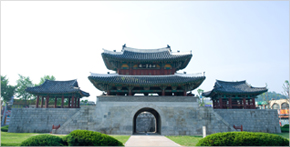Jeonju Hanok Village [Slow City]

Jeonju Hanok Village is located in the city of Jeonju and overlaps Pungnam-dong and Gyo-dong. There are over 800 traditional Korean hanok houses. While the rest of city has been industrialized, Hanok Village retains its historical charms and traditions.
Jeonju Hanok Village is especially beautiful for its unique roof edges, which are slightly raised to the sky. Hanok houses are generally divided into two sections, Anchae and Sarangchae. Sarangchae is where the men dwell, and is referred to as the Seonbi room. Because men and women had to remain separate, Anchae is situated deep inside the house so that it is secretive and quiet.
Another trait of Hanok is that all the houses are heated with ondol, a unique sub-floor heating system. Since Koreans enjoy sitting, eating, and sleeping on the floor, it needs to remain heated. A part of Hanok has been set aside so that tourists can experience traditional Korean life, called Hanok Life Experience Hall. You can enter the rooms to experience the warm floor first-hand. An advantage of this system is that it is warm in the winter and cool in the summer.
The food provided is very traditional, which adds to the traditional ambience. At Jeonju Hanok Village, visitors can enjoy traditional Korean life and traditional foods like bibimbap, the most well known dish from the Jeonju region.
Jeonju National Museum





















